Hello amazing teachers!
Are you looking for a fun and engaging way to bring history to life for your students? Meet Sabaton, a Swedish heavy metal band known for their powerful songs about historical events. While heavy metal might not be the first thing that comes to mind for a primary school setting, Sabaton’s music is a treasure trove of educational content that can make learning history exciting and memorable for your students.
Let’s explore how you can use Sabaton’s songs to enhance your history lessons.
Who are Sabaton?
Sabaton is a band that combines heavy metal music with historical storytelling. Their songs cover a wide range of historical events, from ancient battles to modern warfare. With their captivating melodies and dramatic lyrics, Sabaton makes history come alive in a way that’s both educational and entertaining.
Why Use Sabaton in Your Classroom?
- Engaging Content: Sabaton’s energetic music can capture students’ attention and make historical events more interesting.
- Storytelling: Each song tells a story, helping students to understand and remember historical events and figures.
- Discussion Starters: The lyrics can serve as a springboard for discussions about the historical context, causes, and consequences of events.
How to Use Sabaton in Your History Lessons
- Song Selection: Choose songs that are age-appropriate and relevant to your curriculum. Some good options include:
- “Bismarck”: The story of the famous German battleship during World War II.
- “Christmas Truce”: About the remarkable events and friendships between allied forces and German troops around the trenches during the Christmas truce in WW I.
- “Aces in Exile”: Highlighting the bravery of foreign pilots in the Battle of Britain.
- “Carolus Rex”: The story of a Swedish king gone quite crazy.
- There are others from Africa, Greek history, and much more.
- Introduce the Historical Context: Before playing the song, give your students a brief overview of the historical event or figure. This will help them understand the lyrics better.
- Listen and Analyse: Play the song for your class and provide the lyrics for them to follow along. After listening, discuss the key points mentioned in the song. Ask questions like:
- What event or person is the song about?
- What emotions or themes are present in the lyrics?
- How does the music reflect the historical event?
- Creative Projects: Encourage your students to engage with the content creatively:
- Drawing: Have them draw scenes inspired by the song’s story.
- Writing: Ask them to write a short essay or a diary entry from the perspective of a historical figure mentioned in the song.
- Role-Playing: Organise a role-playing activity where students act out parts of the historical event.
- Compare and Contrast: Use Sabaton’s songs alongside traditional history lessons, such as OpenSTEM’s HASS materials. Compare the song’s portrayal of events with historical texts and discuss any differences or artistic liberties taken by the band.
Tips for Success
- Preview the Songs: Ensure the content is suitable for your students’ age group and comprehension level.
- Create a Safe Space: Some historical events may be sensitive. Encourage respectful discussions and be prepared to address any tough questions that arise.
- Encourage Curiosity: Let students ask questions and explore topics that interest them further. Use the songs as a gateway to deeper learning.
Using Sabaton’s music in your history lessons can bring a fresh and dynamic approach to teaching. Your students will not only learn about historical events but also develop a greater appreciation for the power of storytelling through music.
So, crank up the volume and let Sabaton help you rock your history lessons!
Resources
- Sabaton Official Website: Sabaton.net
- YouTube Channel: Sabaton’s official YouTube channel has music videos with historical context.
- Lyrics and Discussions: Websites like Genius.com provide lyrics and interpretations of Sabaton’s songs.
Let’s make history unforgettable for our students!







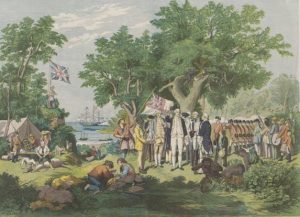 Not strictly speaking within this week, but close enough to be included: it was 22 August, 1770, when James
Not strictly speaking within this week, but close enough to be included: it was 22 August, 1770, when James 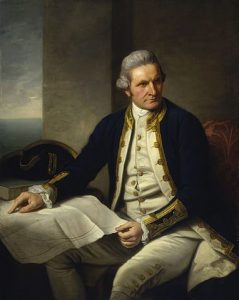
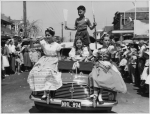 6th June: This year Wednesday 6 June was marked by the opening match of the annual State of Origin rugby league series between the NSW Blues and the Qld Maroons. Whilst rugby league has its own fascinating
6th June: This year Wednesday 6 June was marked by the opening match of the annual State of Origin rugby league series between the NSW Blues and the Qld Maroons. Whilst rugby league has its own fascinating 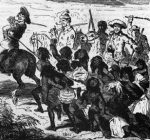 10th June: A more tragic event in Australian history is the
10th June: A more tragic event in Australian history is the  11th June: On this day in 1770,
11th June: On this day in 1770, 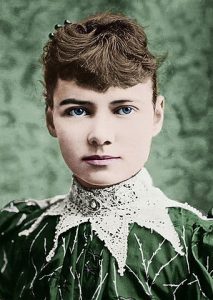
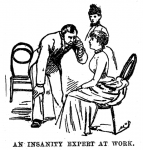 She was born 154 years ago in a part of Pittsburgh, USA, named after her father, Michael Cochran, who had worked his way up from being a labourer to a major landowner, postmaster and respected justice. A passionate advocate for women’s rights from the age of 16, her eloquence landed her a job as a writer for the local newspaper. At the age of 21, she served as a foreign correspondent in Mexico, later publishing her experiences in a book. She was forced to flee Mexico after criticising the Mexican government for imprisoning a local journalist.
She was born 154 years ago in a part of Pittsburgh, USA, named after her father, Michael Cochran, who had worked his way up from being a labourer to a major landowner, postmaster and respected justice. A passionate advocate for women’s rights from the age of 16, her eloquence landed her a job as a writer for the local newspaper. At the age of 21, she served as a foreign correspondent in Mexico, later publishing her experiences in a book. She was forced to flee Mexico after criticising the Mexican government for imprisoning a local journalist. Nellie’s next exploit was to attempt to match the journey from Jules Verne’s novel “Around the World in 80 Days”. The attempt became a race with a rival newspaper fielding another candidate, travelling in the opposite direction. As in the novel, using steamships and railways, Bly started on 14 November, 1889 and travelled through England, France (where she met Jules Verne), Italy, Egypt, Sri Lanka, Penang, Singapore, Hong Kong and Japan (as well as a visit to a leper colony in China). She sent short updates on her progress by telegraph from most places, now connected by submarine cables for the new electric telegraph network. She returned victorious to New York a mere 72 days later, on 25 January, 1890, also beating her rival by 4 1/2 days. Her success inspired a board game, no doubt helping 19th century children with their Geography knowledge!
Nellie’s next exploit was to attempt to match the journey from Jules Verne’s novel “Around the World in 80 Days”. The attempt became a race with a rival newspaper fielding another candidate, travelling in the opposite direction. As in the novel, using steamships and railways, Bly started on 14 November, 1889 and travelled through England, France (where she met Jules Verne), Italy, Egypt, Sri Lanka, Penang, Singapore, Hong Kong and Japan (as well as a visit to a leper colony in China). She sent short updates on her progress by telegraph from most places, now connected by submarine cables for the new electric telegraph network. She returned victorious to New York a mere 72 days later, on 25 January, 1890, also beating her rival by 4 1/2 days. Her success inspired a board game, no doubt helping 19th century children with their Geography knowledge!
Since implementing this program I've really noticed how the students are improving.
Trent Perry, Teacher